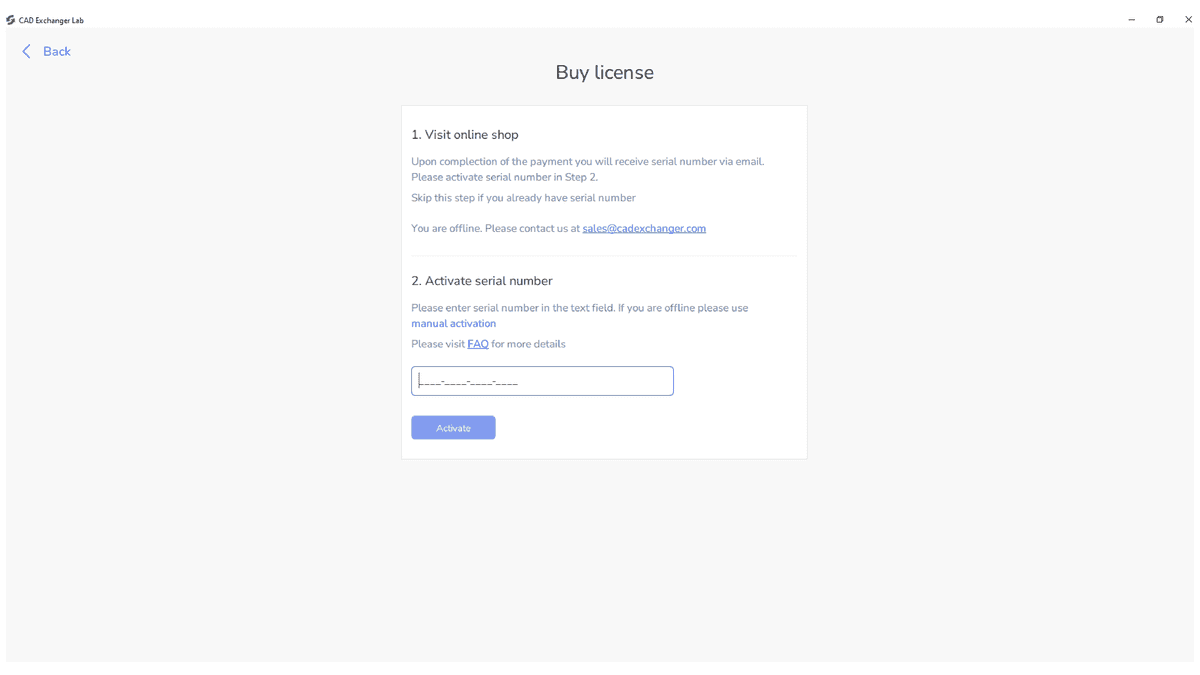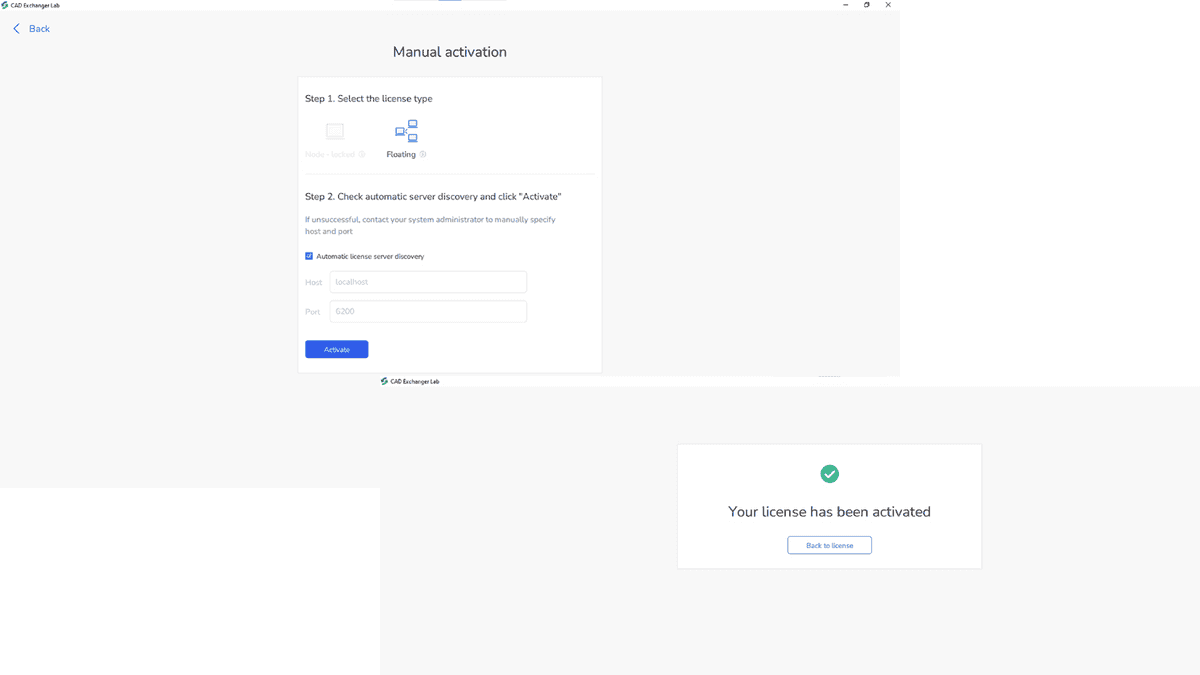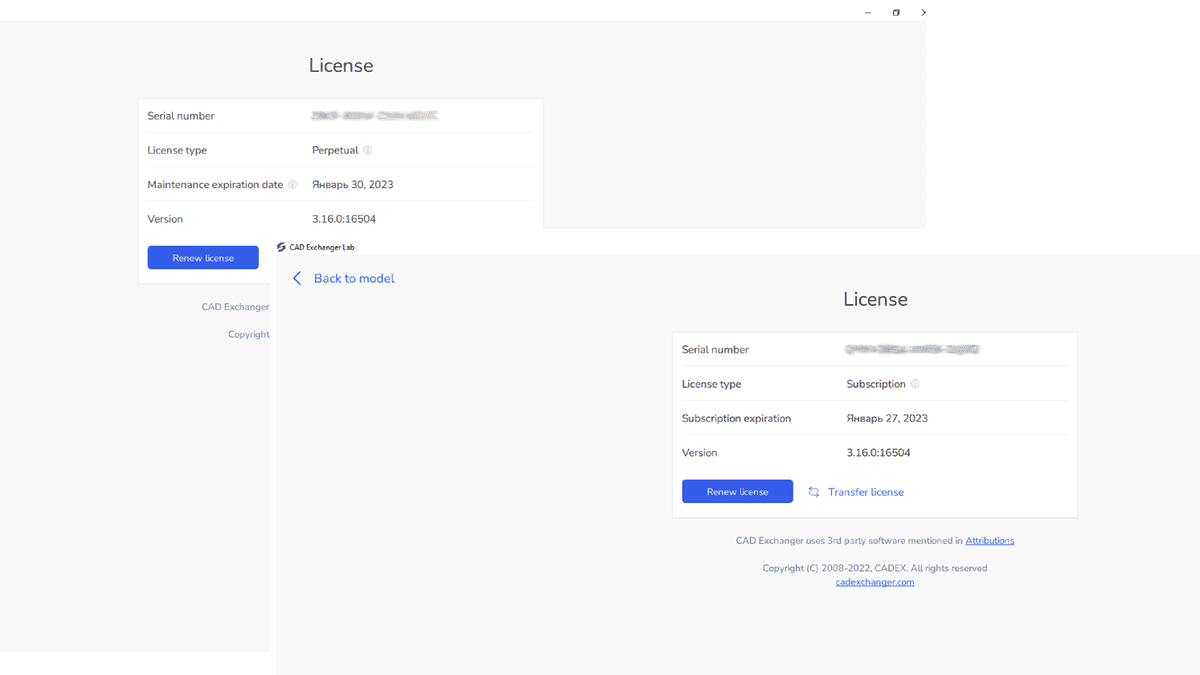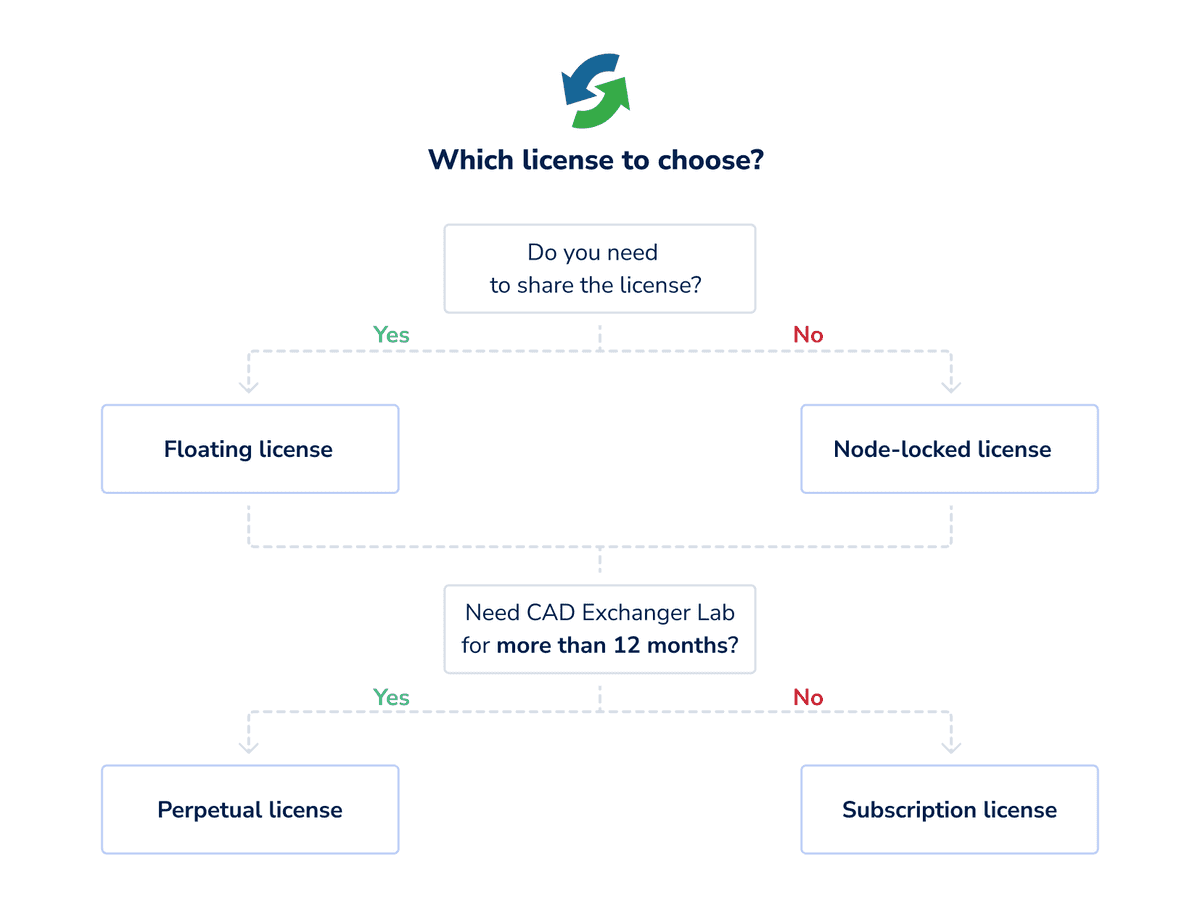Editor's note: This post reflects the changes in the licensing policy that came into effect in October 2021. If you have an active license bought before October 2021, it falls under the conditions described in the original post.
Great to have you here! We can’t help but cherish the hope that you are thinking about an official CAD Exchanger Lab usage. No pressure whatsoever, let’s just go through the ins and outs of license options.
There are node-locked and floating licenses available with a subscription and perpetual options for each of them. Below we will briefly describe all four licensing models.
Choose according to your needs
For a particular computer or an individual user — a node-locked license

If we are talking about personal use or a small business with a few users, a node-locked license is what you need. This type of license is issued for use by a single person and is tied to a piece of network hardware via its MAC address. Simply speaking, one PC — one serial number. While installing, you may either trust automatic settings or contact support to obtain a key for a specific network device for manual activation. The latter is relevant if the computer CAD Exchanger will be used on is behind a strict firewall or has no Internet access at all.
For multiple computers or corporate usage — a floating license

In the case you need to share CAD Exchanger Lab among multiple computers or a large number of staff members, it is reasonable to select one of the floating license options. Moreover, this option is suitable when you work in a hybrid mode and have to use the program both at the office and at home. A floating license is tied to the server via its MAC address and allows the software to be used on any PC in your local network or VPN. To enable the application, the system administrator needs to install a license server that manages end-user licenses. Simultaneous use of the software is limited by the concurrent usage count allowed by the purchased licenses. To let one more user run the software, any of the current users need to close the program and thus release the license.
This type of license is available on Windows and Linux, and running a license server is possible only on Windows or Linux physical machines.
Choose the access duration

You can purchase both node-locked and floating licenses in the form of a subscription or a perpetual license. The choice depends on the duration of the project CAD Exchanger is used for: a subscription suits projects running up to a year, while a perpetual license is more cost-efficient for longer projects.
For shorter projects — a subscription license
A CAD Exchanger Lab subscription is purchased for 12 months and can be renewed annually. It is a full, yet temporary, pack with all new updates included (typically, four software releases — once a quarter). You may either renew your subscription or deal without it and get back whenever your project demands.
In case you are working on a temporary project involving CAD data exchange or simply have no room for higher upfront payments, a subscription license is a smart choice.
For longer projects — a perpetual license
By purchasing a perpetual license, you get life-long access to CAD Exchanger Lab with a 12-month updates package and can update to new versions released within a year after purchase for free.
Perpetual licenses will be a good fit for those who deal with 3D CAD data on a regular basis and would like to save time firing a full-blown CAD system every time the need occurs.
Once your year of access to updates expires, you can continue using the version you ended up on indefinitely, or you can purchase another year of updates for an extra incremental small fee (about 25% of the full license). We always recommend the second option to stay tuned for regular enhancements, bug fixes, new formats, and features. If you drop maintenance, you can resume it later, but that will be subject to the reinstatement fee. So if you plan to use CAD Exchanger Lab regularly and to minimize license fees, then keeping active maintenance is the way to go.

We are proud to have both individual users and large companies among our customers. And we never stop trying to outdo ourselves in improving the experience of each of them. So whether you are a freelance engineer or one who is seeking an enterprise solution, one of these four options could be exactly what you need.